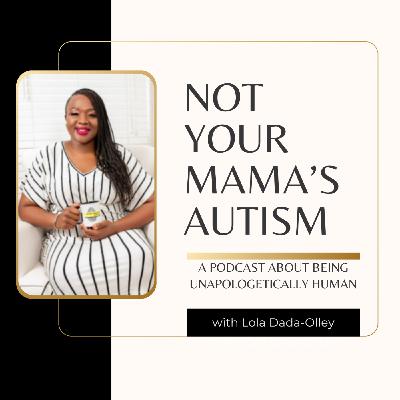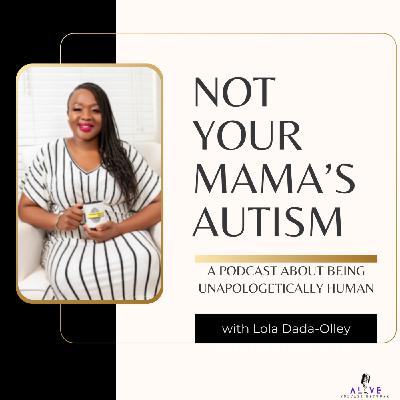Creating Cultures of Neuroinclusion: A Talk with Dr. Theresa Haskins
Update: 2025-03-01
Description
Summary
Dr. Theresa Haskins, a professor, researcher, consultant, corporate executive, mom, wife, and advocate, joins the podcast. She shares her journey as an advocate for her children and a self-advocate. Dr. Haskins discusses the diagnosis process for her children and the challenges they faced. She also talks about her experience studying educational psychology and getting her PhD in education. She emphasizes the importance of choice and autonomy in education and the need for inclusive and differentiated learning approaches. Neuroinclusion means creating environments that respect and accept differences in how individuals engage, communicate, and interact with each other. It involves allowing multiple realities and ways of being to coexist without judgment or the need to change others. To achieve neuroinclusion, it is important to start young by building cultures of inclusion in schools and teaching children to respect and value diversity. Additionally, workplaces should prioritize neuroinclusion by creating equitable opportunities for neurodivergent individuals and allowing all employees to be their authentic selves. Neuroinclusion benefits everyone by fostering authenticity and creating a more accepting and inclusive society.
Keywords
advocate, diagnosis, children, educational psychology, PhD, choice, autonomy, inclusive education, differentiated learning, neuroinclusion, differences, respect, acceptance, diversity, inclusion, communication, engagement, authenticity, workplace, education
Takeaways
Dr. Theresa Haskins is an advocate for her children and a self-advocate.
She shares her experience with the diagnosis process for her children and the challenges they faced.
Studying educational psychology and getting her PhD in education taught her the importance of choice and autonomy in education.
Dr. Haskins emphasizes the need for inclusive and differentiated learning approaches. Neuroinclusion means respecting and accepting differences in how individuals engage, communicate, and interact with each other.
Starting young by building cultures of inclusion in schools is crucial for promoting neuroinclusion.
Workplaces should prioritize neuroinclusion by creating equitable opportunities and allowing all employees to be their authentic selves.
Neuroinclusion benefits everyone by fostering authenticity and creating a more accepting and inclusive society.
Chapters
00:00 Introduction and Background
04:16 Discovering Giftedness
08:04 The Importance of Choice and Autonomy in Education
27:36 The Impact of Psychological Safety on Autistic Inclusion
32:20 Increasing Empathy for More Inclusive Classrooms and Workplaces
36:25 Corporations vs. Classrooms: The Inclusiveness Divide
41:29 The Human Nature of Dividing and the Need for Neuroinclusion
43:31 Defining Neuroinclusion: Acceptance and Respect for Differences
45:18 Unconscious Bias and the Importance of Neuroinclusion
47:58 Neuroinclusion in the Workplace: Authenticity and Equitable Opportunities
TRANSCRIPT
Lola (00:02 )
Hello, welcome. Welcome to the Not Your Mama's Autism podcast. I'm Lola Dada -Olley On the podcast today, we have within our midst, Dr. Theresa Haskins, a woman who wears many, many, many hats. Professor, researcher, consultant, corporate executive, mom, wife, advocate.
Welcome. Welcome to the podcast today. Thank you.
Theresa Haskins (00:35 )
Thanks for having me here. I think I'm in good company with a woman who wears many hats.
Lola (00:41 )
Perhaps, perhaps. I guess it takes one to know one, and we're matching, so we're both wearing flip.
Theresa Haskins (00:46 )
Yes, it does. And we matched,
and this was not planned, everyone. We just looked fabulous in blue.
Lola (00:50 )
It was, it was, it wasn't, it
wasn't. You know, when you're in sync, you're, you're, you're, you're in sync. So background wise, we're kind of alluding to, we have known each other for years, in work circles, we have known ourselves for years. But I'm so interested in just learning more about the, all this multiple, this multiple side of, these multiple sides of you. So you are.
Theresa Haskins (01:03 )
Mm -hmm.
Lola (01:21 )
Where do we even start? You are both an advocate for your children as well as a self advocate yourself. So let's kind of start a little bit at the beginning, depending on what your answer to this is, which diagnosis came first?
Theresa Haskins (01:42 )
Children.
Lola (01:43 )
children. And tell us how you and your children were all ultimately diagnosed.
Theresa Haskins (01:52 )
So it's an interesting thing because it actually does go back to my childhood. I have a son. I do have two sons, but that's not in my childhood. Let's go back and reframe that thought. I had a cousin with classic autism. And this is the early 80s and didn't really know what autism was.
had a lot of the stereotypical traits because he had more of a classic profile. He was a larger young man, had some intellectual difficulties, but he would end up graduating from high school. But I just remember him at holidays and family gatherings and how he was different. My mom was a kind of a special education associate. So we always had a propensity in helping,
with Special Olympics and those with IDD. And I was always exposed to the disability side of things. And so, when I was in high school, I remember helping other disabled individuals, whether they had neurodivergence or not, that wasn't really a thing. And I was part of the generation that if people did have learning differences, they went to things, we called it the van, right? So it was like,
outside
of the classroom. And so there was like a separation of things. I remember going to the van once, but then being sent back to the classroom. And it might be because I may have a profile more similar to my children, which would be twice exceptionalities. And so, you know, I would grow up and not always fit in and things got harder when I was more on my own and my parents were kind of off doing their things in high school.
And so I would get into college, I would become a note taker for people with disabilities. I've always had this need to help others and really found joy in that. I didn't know I was going to be a mom. And I thought I knew what I would know what being a parent was, because I like helped raise my cousins. I was like a nanny at the age of 10. By the way, that would never happen today, but it was most certainly a thing back then. And I would end up
really not having my first barn until I was in my late 20s and knew right away that he was different. I remember when he was just a little baby, he would just like kind of stare past me and my mom passed before I had children. So I'm a motherless mother and I'd read that book and I used to make the joke, he must be staring at mom because she's not here. She's like passed.
Lola (04:38 )
Hmm...
Yeah.
Theresa Haskins (04:40 )
But it would
Lola (04:41 )
Yeah.
Theresa Haskins (04:41 )
be when he was coming up to nine months, one year where he wasn't waving and he wasn't, he wasn't babbling like other children do. And then when we were coming towards his, I'd say one and a half second year, he wasn't talking, but he could speak. So at the age of two, and then definitely by three, he knew his alphabet. He could count to a hundred.
he could write in Wingdings. And I discovered that in the most interesting way. I was trying to teach him how to write the word frog and he was writing this alien language. And I remember calling my husband over going, my God, Brian, there's something wrong with him. And I was kind of upset and trying to work with the baby, my son, not the baby actually, but at the time he was and being like, Raiden, write it right. And he would grunt and kind of in his own way say, I am. And I'm like,
Lola (05:13 )
Mmm.
Yeah.
Theresa Haskins (05:36 )
husband saw it and he took it to the computer and typed the word frog in Times New Roman and then changed it to Wingdings and it said frog in Wingdings. He learned how to write and read Wingdings. So you definitely have this precocious child and I remember going to the doctor saying, you know, could he be autistic? And she's like, I don't know. So I actually kind of had to push
for him to even get the appointment to be diagnosed. They sent them for hearing checks first. They sent them for vision checks, pretty much ruling out any other physical issue before they'd even let us get near a psychiatrist. And then when we were doing the battery, a lot of the things that they're actually testing have more to do with intelligence than autism.
And so by the end of it, they're like,
Comments
In Channel
















